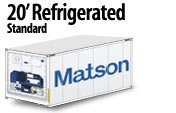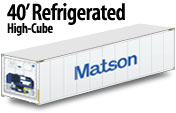We use cookies and other similar tracking technologies (collectively, “Cookies”) on our website to enhance functionality and personalize your experience, for statistical analysis, and for advertising purposes, including to track your use of our site and offer you advertisements that target your particular interests. You can learn more about our use of Cookies by reviewing our Privacy Policy and reviewing the below, and you can exercise your rights related to Cookies below.
What is a cookie?
Cookies are small text, image or data files or tag code snippets stored on your device when you use your browser to visit an online site.
Using cookies and related trackers, we may collect and disclose to third-party partners, including service providers, basic identification information, device information and other unique identifiers, your activity on our website such as pages viewed, and commercial data. To learn more about the personal information we collect, how we use it, and how we share it, please visit our Privacy Policy.
You have the right to accept or reject the optional Cookies listed below using the buttons provided. If you visit us from a different device or browser, or clear Cookies, you may need to re-select your preferences. Even if you reject all optional Cookies, your use of our websites or apps may still be analyzed by us and/or our service providers for different purposes, including to operate the site and for legal and security reasons.
Essential Cookies are required to enable basic functions and are necessary for the proper function of the website.
Cookie Preferences
This cookie is used to store the user's cookie consent preferences.
30 days
Google Tag Manager simplifies the management of marketing tags on your website without code changes.
cookiePreferences
Registers cookie preferences of a user
2 years
td
Registers statistical data on users behavior on the website. Used for internal analytics by the website operator.
session
These cookies are used for managing login functionality on this website.
wordpress_logged_in
Used to store logged-in users.
Persistent
wordpress_sec
Used to track the user across multiple sessions.
15 days
wordpress_test_cookie
Used to determine if cookies are enabled.
Session
These Cookies collect information to measure and analyze how people use our website (e.g., how many visits, pages viewed, average browsing time, etc.). This information helps us understand how visitors use our website, to improve and protect our website.
Google Analytics is a powerful tool that tracks and analyzes website traffic for informed marketing decisions.
Service URL: policies.google.com
_ga
ID used to identify users
2 years
_gali
Used by Google Analytics to determine which links on a page are being clicked
30 seconds
_ga_
ID used to identify users
2 years
_gid
ID used to identify users for 24 hours after last activity
24 hours
_gat
Used to monitor number of Google Analytics server requests when using Google Tag Manager
1 minute
__utma
ID used to identify users and sessions
2 years after last activity
__utmt
Used to monitor number of Google Analytics server requests
10 minutes
__utmb
Used to distinguish new sessions and visits. This cookie is set when the GA.js javascript library is loaded and there is no existing __utmb cookie. The cookie is updated every time data is sent to the Google Analytics server.
30 minutes after last activity
__utmc
Used only with old Urchin versions of Google Analytics and not with GA.js. Was used to distinguish between new sessions and visits at the end of a session.
End of session (browser)
__utmz
Contains information about the traffic source or campaign that directed user to the website. The cookie is set when the GA.js javascript is loaded and updated when data is sent to the Google Anaytics server
6 months after last activity
__utmv
Contains custom information set by the web developer via the _setCustomVar method in Google Analytics. This cookie is updated every time new data is sent to the Google Analytics server.
2 years after last activity
__utmx
Used to determine whether a user is included in an A / B or Multivariate test.
18 months
These Cookies support displaying ads tailored to your preferences on social platforms and other websites and help us measure how well our ads perform.
Service URL: policies.google.com
_gac_
Contains information related to marketing campaigns of the user. These are shared with Google AdWords / Google Ads when the Google Ads and Google Analytics accounts are linked together.
90 days



